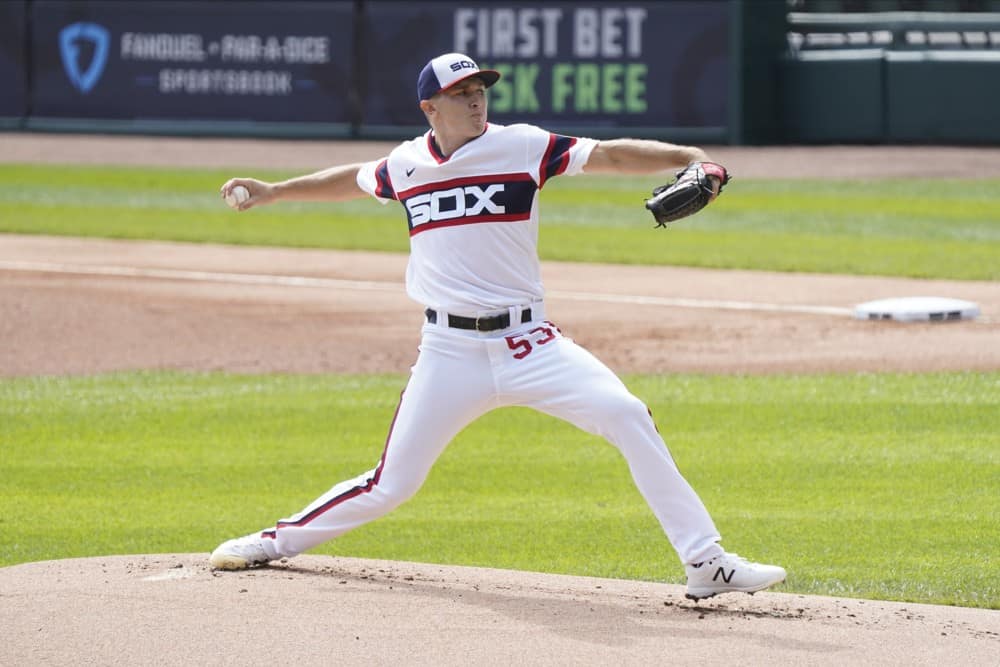The Jonathan Stiever we saw on Sunday wasn't exactly the Jonathan Stiever we're supposed to see. Then again, we weren't supposed to see Jonathan Stiever at all this season.
At first, it was because he was a pitcher who hadn't yet cleared A-ball in an organization with so much other starting depth. Then it was because he'd missed most of spring training with a forearm issue, and he'd be hard-pressed to get the necessary kind of experience building back up in Schaumburg. Also, the all the aformentioned starting depth.
Given these circumstances, Sunday's start was a bonus, especially since it ended with his head held high.
It didn't start that way. Stiever labored through a 36-pitch first inning that was helped by a sketchy call at second base, although maybe it was also hampered by the four-minute review that followed. He threw just 21 of 36 pitches for strikes, and some of his misses were ... well ...

... yeah.
Stiever had scattershot command of the pitches that were supposed to take a direct line, so forget about the pitches intended to be crooked. He got one whiff on a good curve below the zone, but he couldn't get breaking balls in the zone when behind in the count, so he had to cling tenaciously to a pitch that wasn't exactly his friend, either.
The guy who walked just 27 batters over 145 innings across Kannapolis and Winston-Salem issued two walks in his first inning. He said frustration entered the mix early:
“Today probably wasn’t my best stuff because a long inning, wasn’t able to pitch my total game but I feel good with all my pitches,” Stiever said. “That was the frustrating part for me a little because I have been that pitcher who does get ahead and doesn’t walk many guys. Just not finding that zone and fighting off pitches and me not being able to make those pitches was frustrating.”
So the control wasn't there. The velocity wasn't quite as crisp as we've seen in him in Winston-Salem, either. He topped out at 95, with his fastball averaging 92-93, down one or two ticks from his usual sitting range in the minors last year.
What he did show was carry on his fastball, which Statcast said generated six swinging strikes despite numbers that radar guns comfortably capture.
Here are the swinging strikes on secondary pitches, including one curve.
I used the qualifier "Statcast says" because it had a hard time figuring out his stuff. The system said that Stiever got two swinging strikes on curveball, but it had commonly identified changeups as curveballs all day long, like this high, tailing floater that Jeimer Candelario nearly lined into right field. save a fine effort from Danny Mendick.
Sometimes new pitchers with unusual velocity characteristics for a secondary pitch trip up the system, like when Statcast called Zack Burdi's changeup a two-seam fastball because you seldom see off-speed pitches at 91. In this case, Stiever's changeup looked like a feathery thing that sometimes trailed his fastball by a dozen miles per hour. It doesn't yet seem like a convincing offering.
At this point in his development, he hasn't needed it to be that good. When Stiever is humming along, the fastball is getting him ahead, and the curveball is putting them away. He didn't have the command of either to execute his usual game plan, but he eventually figured out why the White Sox usually use the rebuilding Tigers to buoy the self-esteems of starters who could use the boost. The night before, they recalled Reynaldo López from Schaumburg, and he succeeded simply by filling up the zone. Dane Dunning made his debut against Detroit earlier this season, as did Dylan Cease the year before.
it worked well enough. He didn't get the win, but he got the game into the fourth with it tied at 1, and probably could have finished the inning given the lack of stress later on. He needed 36 pitches to record the first three outs, but just 37 pitches to handle the remaining eight.
The hope is that there's no need to see Stiever again this season, whether it's because López pitched well enough to test him against a better opponent, because Dallas Keuchel is beyond his back spasms, or some combination of the two. He's the most promising arm in the system, but Detroit's lineup was still the most threatening one he's ever faced, soft as it may be. It only gets harder from here.
Renteria didn't sound a guy with unreasonably high expectations for Stiever's debut, or for the remainder of 2020.
“He gave us what he was able to give us,” Sox manager Rick Renteria said. “He kept us in the game. Got out of first-inning traffic, kept his composure and did what he needed to do.”
For our purposes of prospect valuation and consideration, Stiever also met objectives. He showed he was physically able to pitch in a competitive environment in 2020, and he showed one of the ways he'll succeed when he gets a chance for good.
(Photo by Rob Grabowski/Icon Sportswire)





